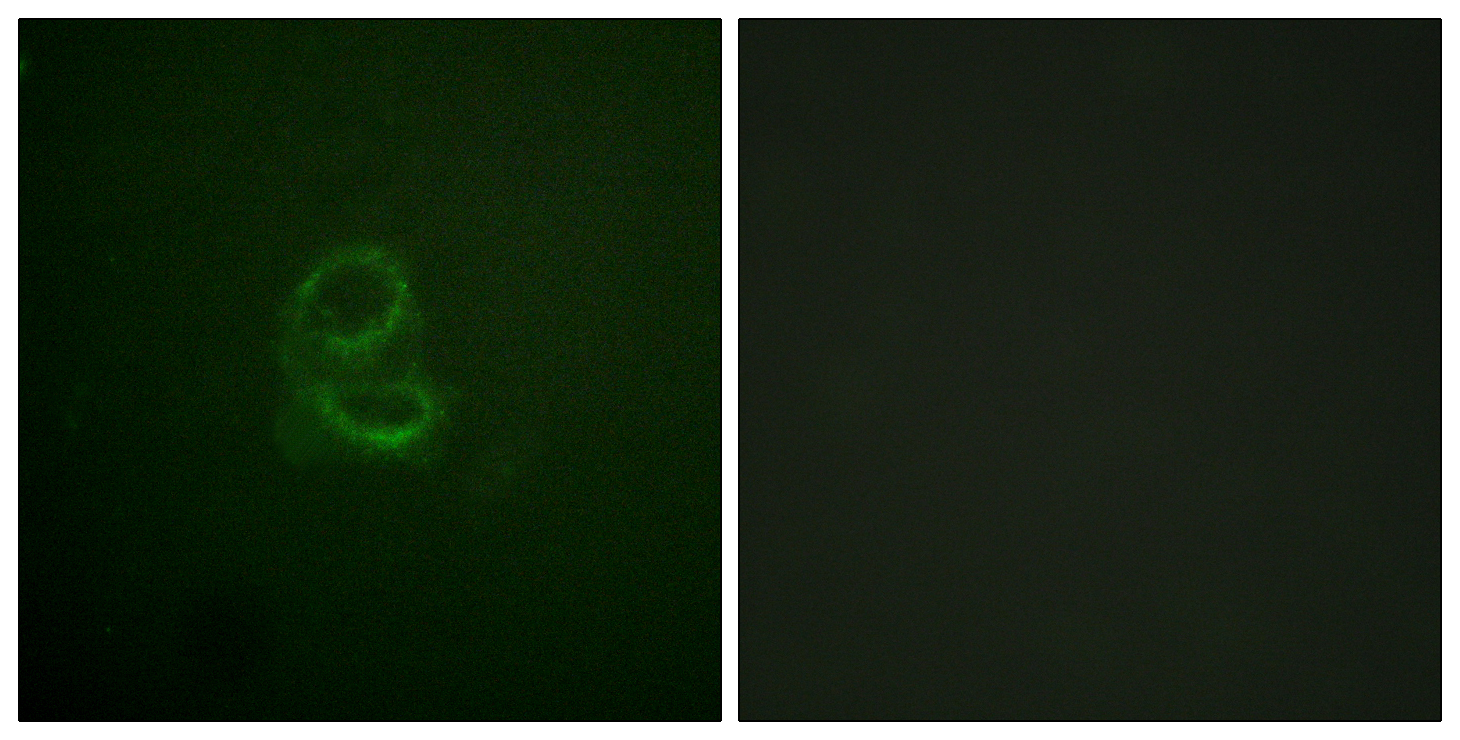IL-4Rα Polyclonal Antibody
- Catalog No.:YT2337
- Applications:WB;IF;ELISA
- Reactivity:Human;Mouse
- Target:
- IL-4R/CD124
- Fields:
- >>Cytokine-cytokine receptor interaction;>>PI3K-Akt signaling pathway;>>JAK-STAT signaling pathway;>>Hematopoietic cell lineage;>>Th1 and Th2 cell differentiation;>>Th17 cell differentiation;>>Pathways in cancer;>>Inflammatory bowel disease
- Gene Name:
- IL4R
- Protein Name:
- Interleukin-4 receptor subunit alpha
- Human Gene Id:
- 3566
- Human Swiss Prot No:
- P24394
- Mouse Gene Id:
- 16190
- Mouse Swiss Prot No:
- P16382
- Immunogen:
- The antiserum was produced against synthesized peptide derived from human IL-4R/CD124. AA range:463-512
- Specificity:
- IL-4Rα Polyclonal Antibody detects endogenous levels of IL-4Rα protein.
- Formulation:
- Liquid in PBS containing 50% glycerol, 0.5% BSA and 0.02% sodium azide.
- Source:
- Polyclonal, Rabbit,IgG
- Dilution:
- WB 1:500 - 1:2000. IF 1:200 - 1:1000. ELISA: 1:20000. Not yet tested in other applications.
- Purification:
- The antibody was affinity-purified from rabbit antiserum by affinity-chromatography using epitope-specific immunogen.
- Concentration:
- 1 mg/ml
- Storage Stability:
- -15°C to -25°C/1 year(Do not lower than -25°C)
- Other Name:
- IL4R;IL4RA;582J2.1;Interleukin-4 receptor subunit alpha;IL-4 receptor subunit alpha;IL-4R subunit alpha;IL-4R-alpha;IL-4RA;CD antigen CD124
- Observed Band(KD):
- 90kD
- Background:
- This gene encodes the alpha chain of the interleukin-4 receptor, a type I transmembrane protein that can bind interleukin 4 and interleukin 13 to regulate IgE production. The encoded protein also can bind interleukin 4 to promote differentiation of Th2 cells. A soluble form of the encoded protein can be produced by proteolysis of the membrane-bound protein, and this soluble form can inhibit IL4-mediated cell proliferation and IL5 upregulation by T-cells. Allelic variations in this gene have been associated with atopy, a condition that can manifest itself as allergic rhinitis, sinusitus, asthma, or eczema. Polymorphisms in this gene are also associated with resistance to human immunodeficiency virus type-1 infection. Alternate splicing results in multiple transcript variants. [provided by RefSeq, Apr 2012],
- Function:
- domain:Contains 1 copy of a cytoplasmic motif that is referred to as the immunoreceptor tyrosine-based inhibitor motif (ITIM). This motif is involved in modulation of cellular responses. The phosphorylated ITIM motif can bind the SH2 domain of several SH2-containing phosphatases.,domain:The box 1 motif is required for JAK interaction and/or activation.,domain:The extracellular domain represents the IL4 binding protein (IL4BP).,domain:The WSXWS motif appears to be necessary for proper protein folding and thereby efficient intracellular transport and cell-surface receptor binding.,function:Receptor for both interleukin 4 and interleukin 13. Couples to the JAK1/2/3-STAT6 pathway. The IL4 response is involved in promoting Th2 differentiation. The IL4/IL13 responses are involved in regulating IgE production and, chemokine and mucus production at sites of allergic inflammmation. In certain cel
- Subcellular Location:
- Cell membrane; Single-pass type I membrane protein.; [Isoform 2]: Secreted.
- Expression:
- Isoform 1 and isoform 2 are highly expressed in activated T-cells.
M2 macrophage-mediated interleukin-4 signalling induces myofibroblast phenotype during the progression of benign prostatic hyperplasia. Cell Death & Disease Cell Death Dis. 2018 Jul;9(7):1-13 IF Human 1:400 prostate tissue prostate fibroblasts
M2 macrophage-mediated interleukin-4 signalling induces myofibroblast phenotype during the progression of benign prostatic hyperplasia. Cell Death & Disease Cell Death Dis. 2018 Jul;9(7):1-13 WB Human 1:1000 prostate tissue prostate fibroblasts
- June 19-2018
- WESTERN IMMUNOBLOTTING PROTOCOL
- June 19-2018
- IMMUNOHISTOCHEMISTRY-PARAFFIN PROTOCOL
- June 19-2018
- IMMUNOFLUORESCENCE PROTOCOL
- September 08-2020
- FLOW-CYTOMEYRT-PROTOCOL
- May 20-2022
- Cell-Based ELISA│解您多样本WB检测之困扰
- July 13-2018
- CELL-BASED-ELISA-PROTOCOL-FOR-ACETYL-PROTEIN
- July 13-2018
- CELL-BASED-ELISA-PROTOCOL-FOR-PHOSPHO-PROTEIN
- July 13-2018
- Antibody-FAQs
- Products Images

- Western Blot analysis of various cells using IL-4Rα Polyclonal Antibody diluted at 1:2000

- Western blot analysis of mouse-kidney 293T lysis using IL-4Rα antibody. Antibody was diluted at 1:2000

- Immunofluorescence analysis of A549 cells, using IL-4R/CD124 Antibody. The picture on the right is blocked with the synthesized peptide.

- Western blot analysis of the lysates from HUVECcells using IL-4R/CD124 antibody.



